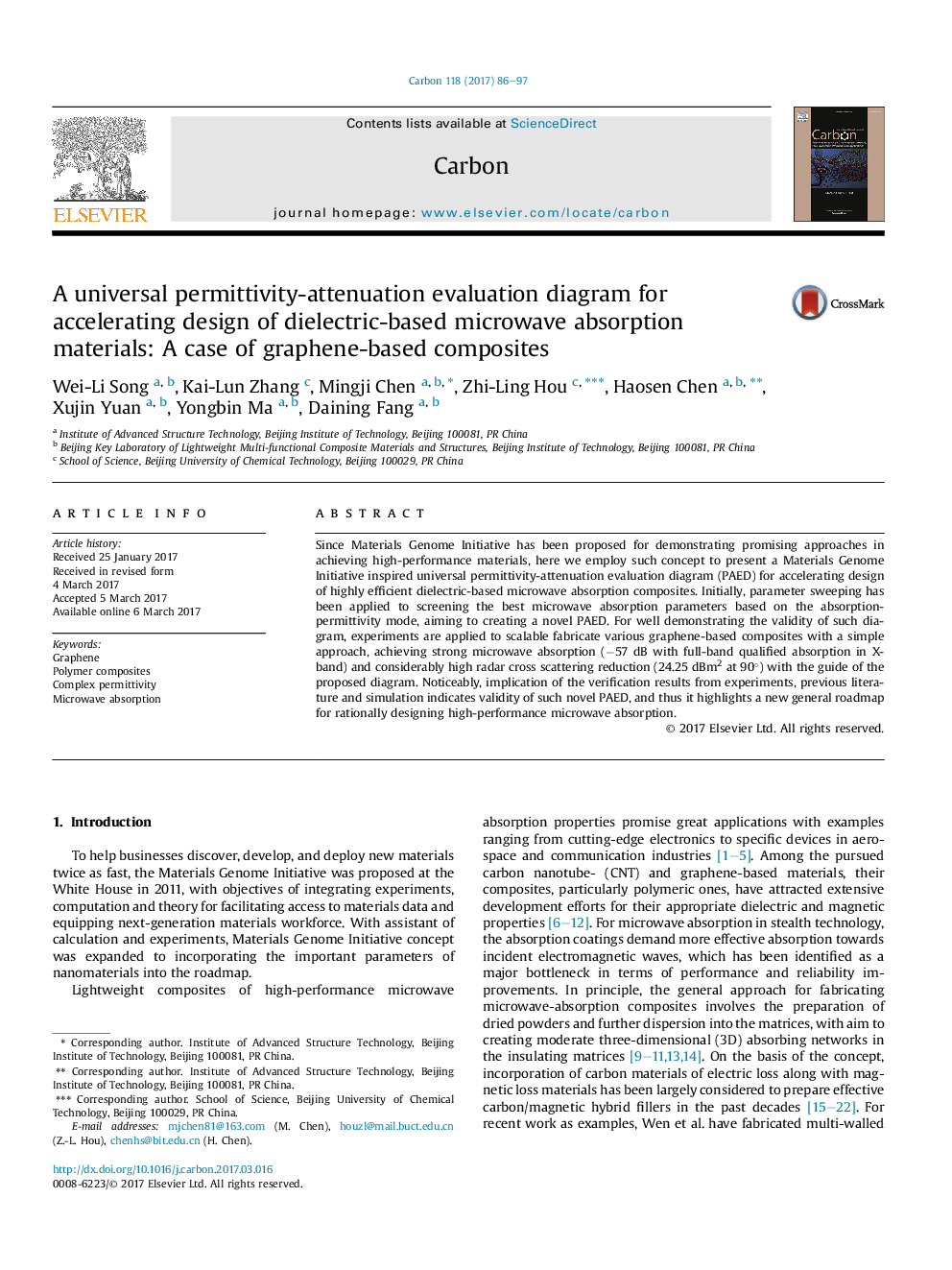| Article ID | Journal | Published Year | Pages | File Type |
|---|---|---|---|---|
| 5432001 | Carbon | 2017 | 12 Pages |
Since Materials Genome Initiative has been proposed for demonstrating promising approaches in achieving high-performance materials, here we employ such concept to present a Materials Genome Initiative inspired universal permittivity-attenuation evaluation diagram (PAED) for accelerating design of highly efficient dielectric-based microwave absorption composites. Initially, parameter sweeping has been applied to screening the best microwave absorption parameters based on the absorption-permittivity mode, aiming to creating a novel PAED. For well demonstrating the validity of such diagram, experiments are applied to scalable fabricate various graphene-based composites with a simple approach, achieving strong microwave absorption (â57 dB with full-band qualified absorption in X-band) and considerably high radar cross scattering reduction (24.25 dBm2 at 90°) with the guide of the proposed diagram. Noticeably, implication of the verification results from experiments, previous literature and simulation indicates validity of such novel PAED, and thus it highlights a new general roadmap for rationally designing high-performance microwave absorption.
Graphical abstractMaterials Genome Initiative inspired permittivity-attenuation evaluation diagram (PAED) are proposed for selecting the best microwave absorption composites via calculating the complex permittivity based on absorption-permittivity model. The PAED suggests a new roadmap for accelerating design of dielectric-based microwave absorption materials.Download high-res image (389KB)Download full-size image
